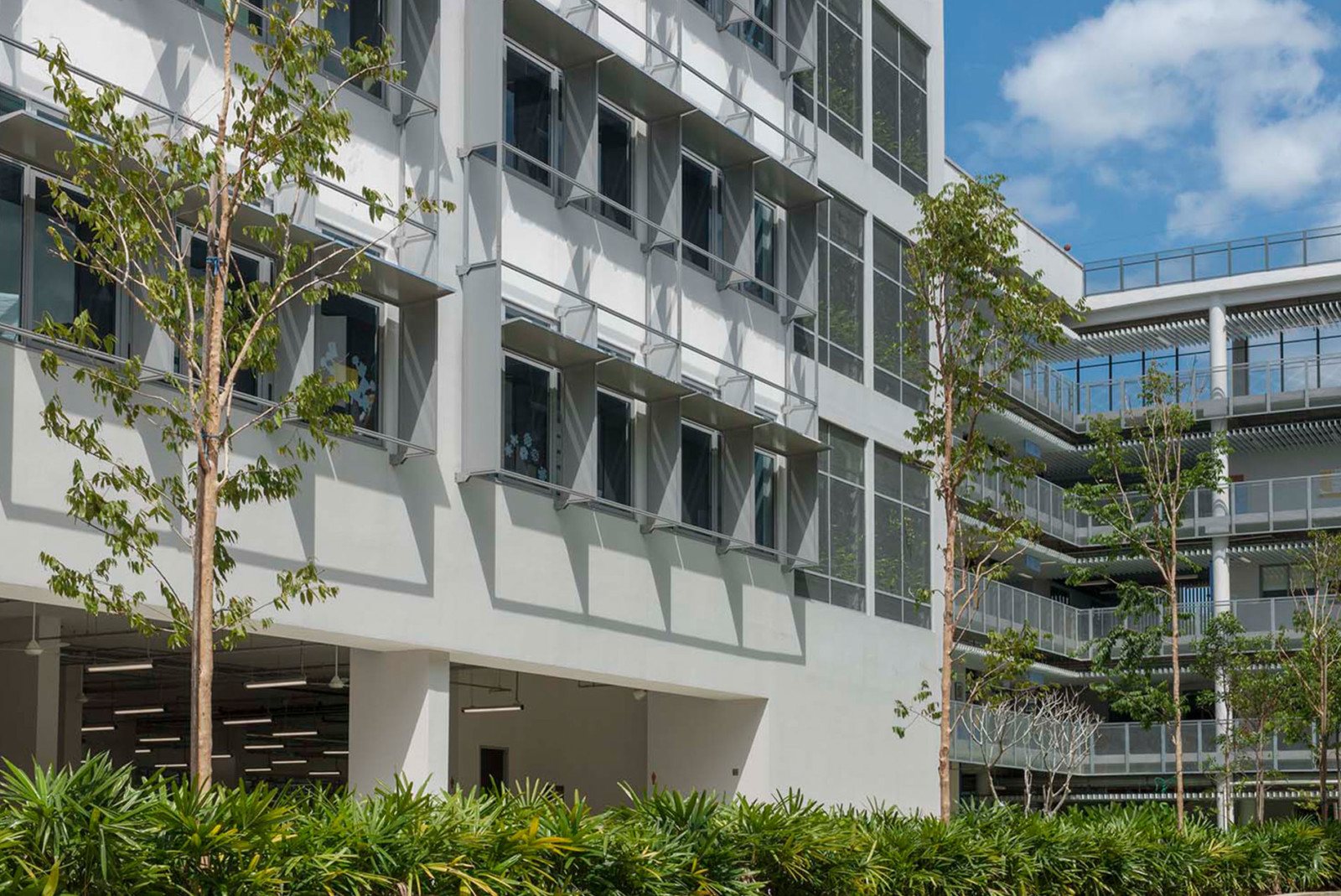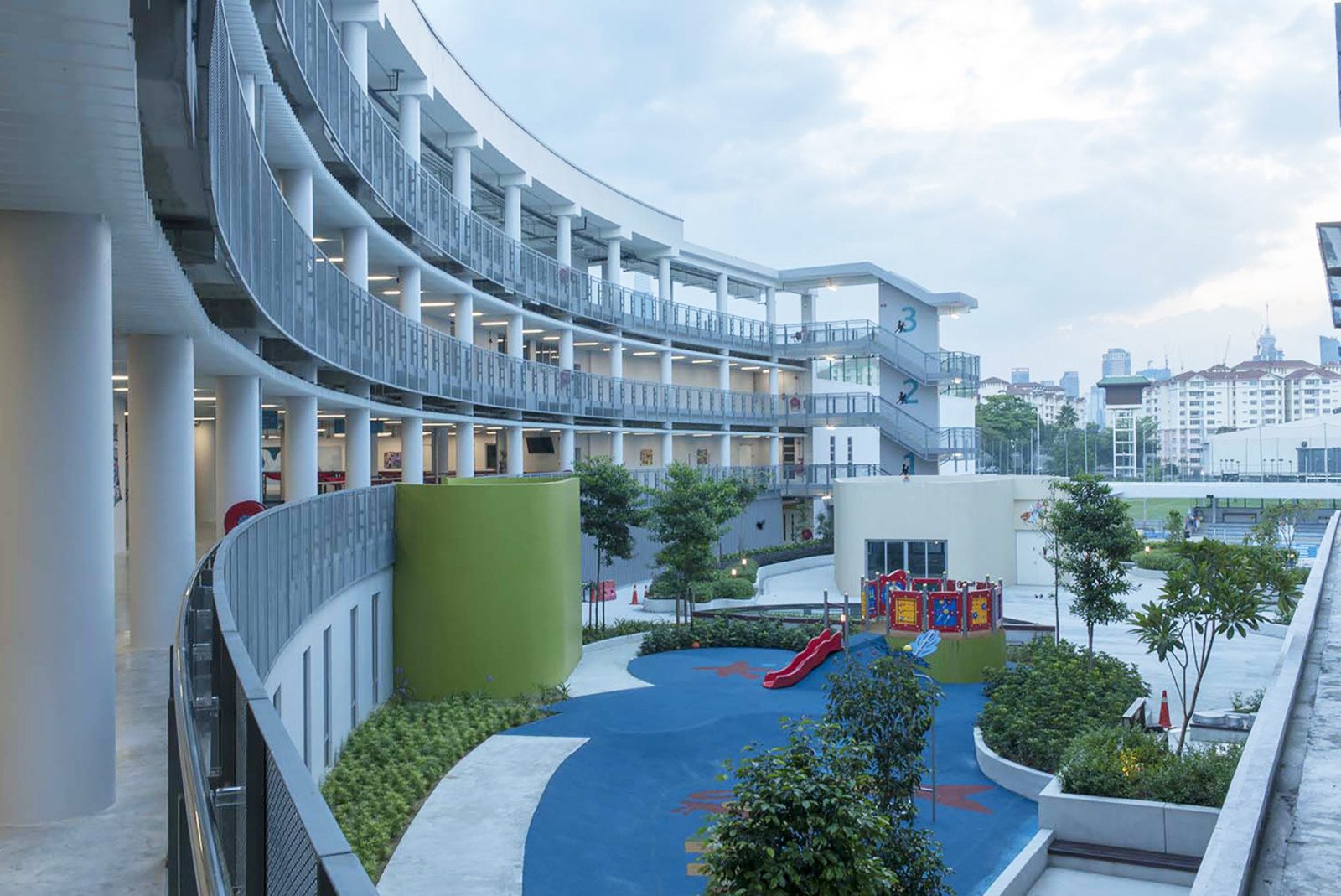In addition to earning Gold in the Education category at the PAM / Malaysian Institute of Architects awards, ISKL is the country’s first Green Building Index Platinum-rated international school.
Designed by HOK in collaboration with Malaysian firm Veritas Design Group, the project adhered to sustainable design and construction processes as well as the the United Nations Sustainable Development Goals. The 26-acre campus provides an environmentally-friendly learning space for 1,700-plus students in the heart of Malaysia’s bustling capital city.
Excerpted from The Star Online:
The design seeks to create an educational environment that reflects the global vision and aspirations of the school, while being rooted in the Malaysian context. Sustainable initiatives were in place from the start. Construction waste materials were segregated into landfill and recyclable categories.
During the design and construction, the use of environmentally friendly products that were locally sourced and produced was practiced to reduce carbon dioxide (CO2) emissions from transportation involved. Materials with recyclable content were also used, including green cement with fly-ash content and recycled content steel bars to reduce CO2 emission from raw material harvesting and production.
Grey water recycling and rainwater harvesting are carried out for toilet and landscape irrigation purposes respectively. The school is landscaped in ways that promote the native biodiversity of the surrounding areas.
Local adaptive and native flowers and trees are planted to promote a natural ecosystem and biodiversity. Incorporated into the student’s outdoor learning activities are urban farming concepts, as well as the natural processes of the ecosystem and biodiversity.
The school is designed to incorporate renewable energy sources on the roof of the building. The school’s intention is to use solar panels to produce at least 5% of the total power consumption of the building, with plans to install more panels in the future to increase the renewable energy to at least 10% of total power consumption.


